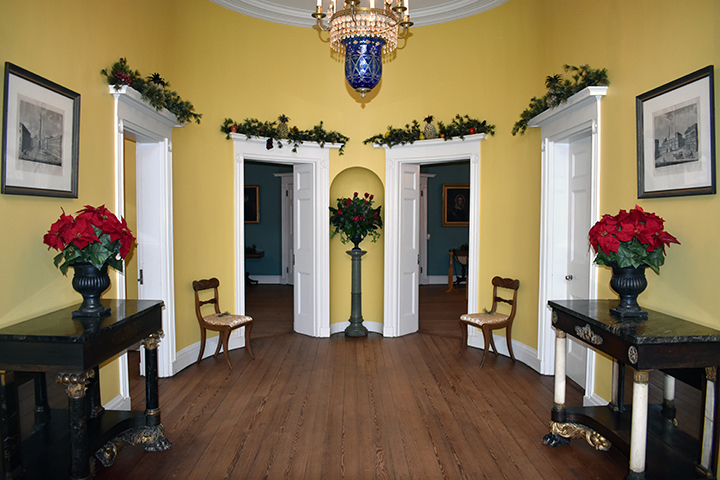The Robert Mills House is one of only five National Historic Landmarks in Columbia and was built in the early 19th century for Ainsley and Sarah Hall. The historic house is open for holiday tours.
The Robert Mills House in downtown Columbia is filled with historical decorations and, starting Friday, visitors on special tours will look to see how the winter holidays were celebrated in the early 19th century.
At the Hampton-Preston Mansion across the street, the 1818 historic home will showcase the holiday trends of the 1860’s including the introduction of popular decor like poinsettias, and holiday food and beverages including eggnog. Historic Columbia coordinates tours of both houses.
This year’s holiday season tours will allow guests to experience the past and hear stories of how the holidays were celebrated in Columbia during the city’s formative years.
At the Robert Mills House, a Classical Revival-style mansion designed and named for the architect and designer of the Washington monument, traditional decorations will line the halls of the 1823 estate. The decorations show how Christmas was celebrated before the popularization of Santa Claus or Christmas trees became centerpieces of holiday celebration.
Betsy Kleinfelder, visitor and interpretive services coordinator at Historic Columbia, has attempted to create an inclusive experience at this year’s holiday season.
“This year we are honoring the 200th anniversary of the Hampton-Preston mansion being built,” Kleinfelder said. “We are trying to talk about both the white residents and the African American residents at this site, most of whom would have been enslaved.”
The $15 admission includes a guided tour of both the Robert Mills House and the Hampton-Preston Mansion. Tours will be offered Tuesday-Saturday at 10 a.m., 11:30 a.m.,1 p.m. and 2:30 p.m. and Sunday at 1 p.m., 2:30 p.m. and 4 p.m. Tickets can be obtained at the Gift Shop at Robert Mills at 1616 Blanding St.
The treats on display in the formal dinning room in the Robert Mills House are realistic replicas of what would commonly be served at holiday feasts in the 19th century.
Betsy Kleinfelder, visitor and interpretive services coordinator at Historic Columbia, has attempted to create an inclusive experience at this year’s holiday season.
Modern decorations are usually crafted out of plastics and other non-organic materials. In the early 19th century, most decorations were made from vegetation that was locally available and usually only lasted a few days before it had to be discarded.








